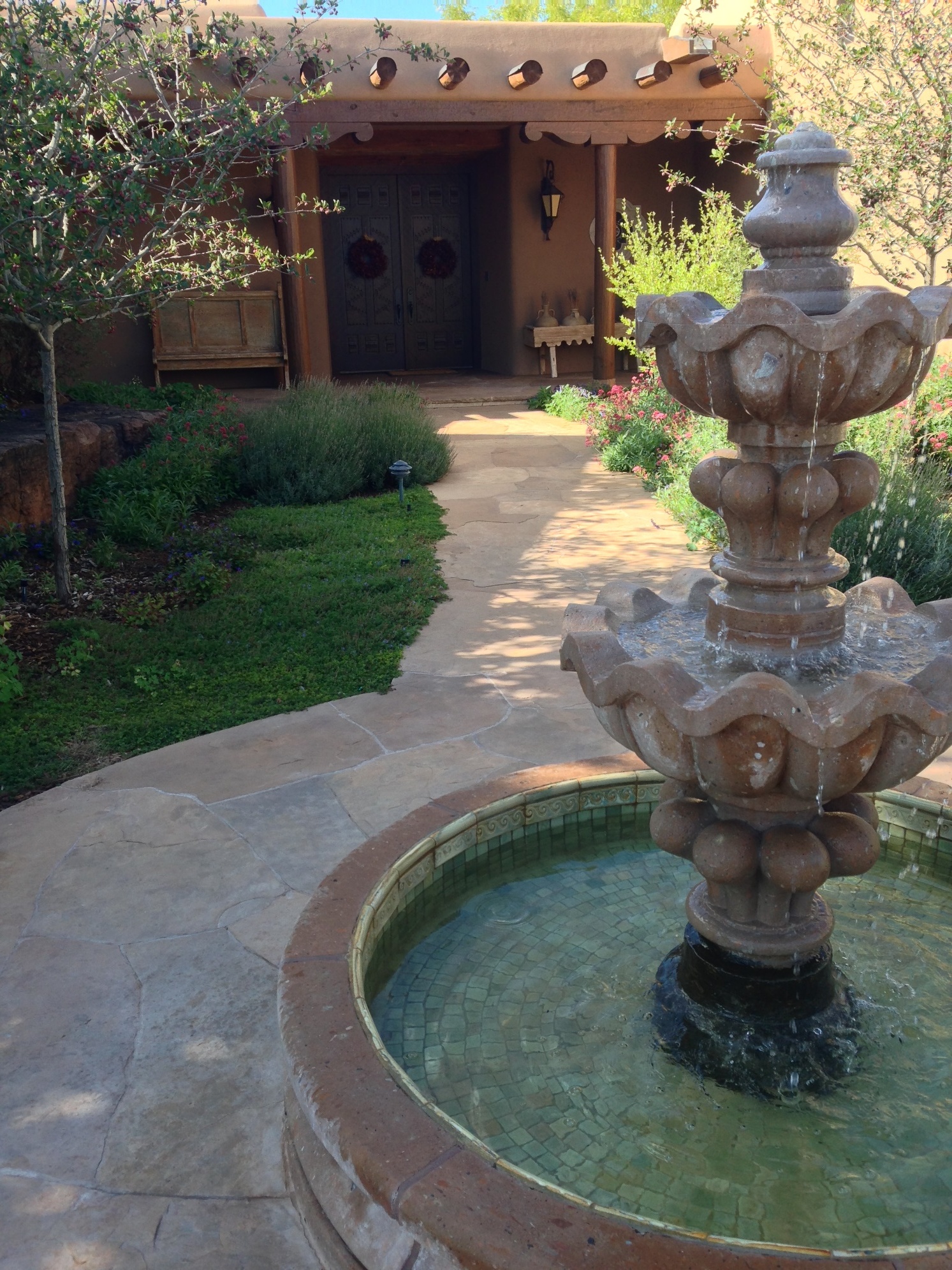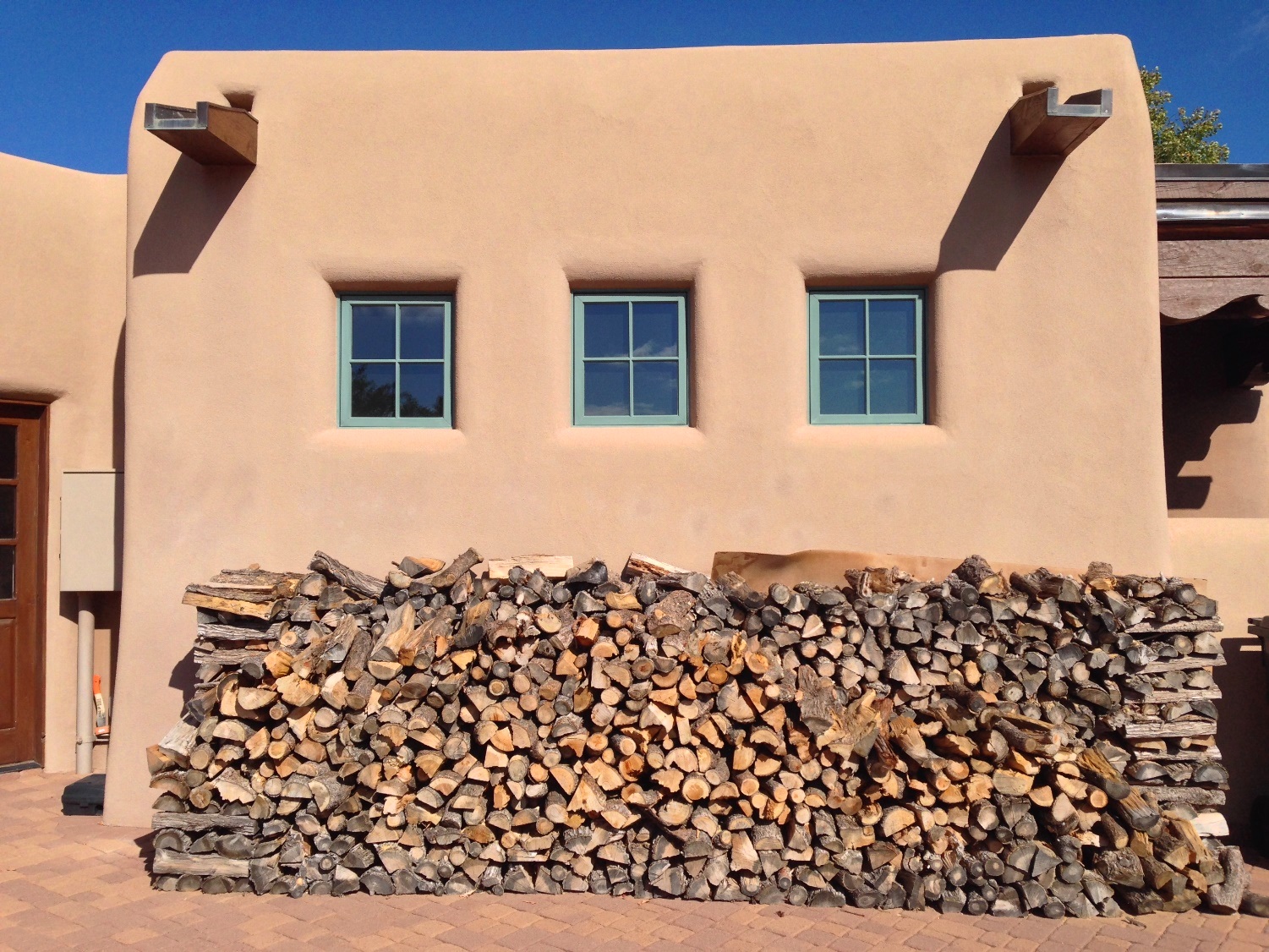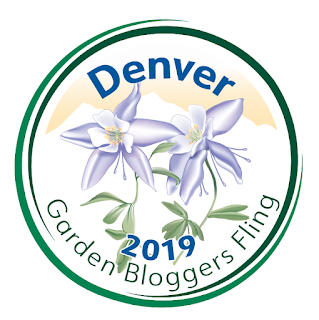Santa Fe Garden Tours: #1 GRAF
/Day 1, Garden 1: The Graf Garden
APLD Conference in Santa Fe
Santa Fe, NM fairly vibrates with natural beauty and inspiration. There was a reason Georgia O'Keefe chose this town for her home and studio life. I was beyond excited to attend a garden design conference there in September--the Association of Professional Landscape Designers' International Design Conference 2016. Along with outstanding speakers and sessions, APLD always devotes a major portion of the conference to tours of private gardens, designed by its members. From what we saw, the artistic energy of the town clearly flows over to the gardens of Santa Fe.
On the tours, I rode on APLD's inaugural trial of a "Photo Bus," a smaller bus from the rest, open to any conference-goer who paid an extra fee for the privilege of a smaller more nimble group, less crowded gardens, no "person in every shot," and bonding with fellow design/garden photography nuts (as obsessed as me!). I loved every minute of the Photo Bus. And that is saying something, as I normally loath bus tours.
Winter finally gives me the time to sort through the photos of that spirited and exhausting conference. On the tours we saw 16 (!) private gardens over two days, plus our final destination of the Santa Fe Botanic Garden. Surprisingly, every garden was good. I won't be able to get them all in, but, over the next few weeks of blog posts, I'll do my best to give you my "curated" highlights.
I'll begin with our first garden on the first day--the garden at Casa Graf, on the outskirts prairie of western Santa Fe.
The most frequent entry garden principle, of all the private gardens we toured, was the walled courtyard. At Casa Graf, we passed through a threshold gate, stepping out of the desert, and into this oasis. It's like entering a different world. And that is the point--a subconsciously peaceful effect; it literally stops you. "You are now entering a refuge from the outside world."
Part of the effect is enhanced simply by water. In desert climates, small pools and fountains psychologically cool the heat. It's the water element as the opposite to fire. Balance.
Note also this particular entry garden's use of blue in the plantings--another cooling effect, and good foliage foil to the warm sandstone and wood.
Dwarf Blue Spruce is one of the repeated elements in this planting plan. In the above three photographs, I am standing in nearly the same spot. You can see the blue spruce repeated within the scope of view. It's part of the reason the front yard feels relaxed and cohesive, but it's something the viewer is not conscious of. A designer's slight of hand! I noticed the repeated blues only when I got home and looked at the photos. At the time, all I perceived was the exquisite light and the Aspen trees, and that I felt my heart beat faster at the exciting design/composition.
The stonework is particularly artfully done throughout this garden.
Notice the blue is repeated again--Blue Spruce in the background, Dwarf Plumbago flowering in the foreground.
And oh! those Aspen trees!
Continuing on in a clockwise stroll around the house, you pass another threshold and enter out upon a vehicle courtyard. Notable: the beauty of adobe with neatly stacked firewood...the "moss rock" stone wall...the luscious fine craftsmanship.
Yes, they actually call this "moss rock" in New Mexico.
(I am writing today from the Pacific Northwest, one of the world's green moss capitols. How different the climate regions think of their common names!)
Continuing around the house, the path leads to stone slab steps that sweep down to the south courtyard.
The south courtyard must be quite lovely from inside the house, with full-length windows all around. It is romantic on the outside as well, with a small lawn, the back-lit canopy of a Honey Locust tree, a sitting nook, and more stonework craftsmanship in a unique boulder/slab water feature.
The sitting nook built into the side of a one-level house here is a classic "Pattern Language" comfort space! And the garden design choices enhances it.
The view out from that sitting nook. Back-lit by morning light. View toward the water feature.
The water feature above was hard to photograph, and we only had 20 minutes in this garden. You'll just have to take my word for it, how well these massive slab boulders were placed and how effective they were at creating a very natural-looking waterfall. It must have been some feat to place them exactly so. It felt like a mountain stream.
Nasella tenuissima (Mexican Feather Grass) was used as one of the drought tolerant grasses in many of the gardens we saw. The deep purple Perovskia (Russian sage) was also common, in bloom in late September everywhere, and looking great.
In the background there are Salvias (such as 'Furman's Red' Cherry Sage) and Agastaches (such as 'Double Bubblemint' Hyssop).
The yellows of the Mexican Feather Grass with the purples of the Perovskia are color wheel opposites. Their juxtaposition makes each grander than if they had been alone.
A FINAL NOTE:
Water conservation
In these photos I am showing my favorite pics for beauty and design concepts. There is also a very practical side of these gardens that's hard to photograph, but is an important foundation to every garden in the desert Southwest--that of water conservation. Not shown here, but existing, are several creative methods to reduce water use, to slow and catch what rainwater does fall, and onsite water storage to eliminate municipal water use during dryer months.
There is water budgeting by Code in Santa Fe, and throughout New Mexico regions. In every garden we saw, designers are using the resource with ever increasing ingenuity.
Design and installation of the Graf Garden: Chamisa Landscaping (2005); Mark Brotton/Living Water LLC (2014).
Story and photography by Alyse Lansing, © 2016. All rights reserved.


















